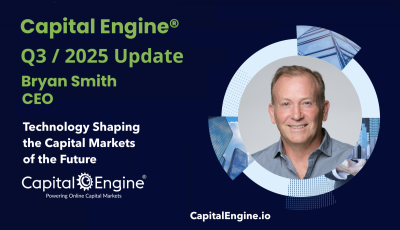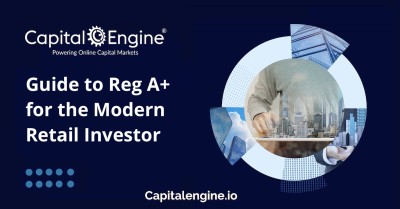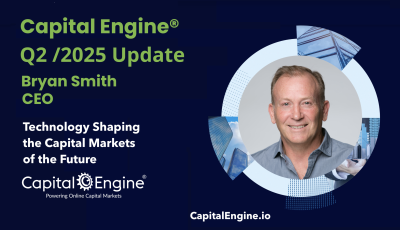The Shift from Public to Private
Public markets have long served as the default investment avenue for individual investors. Yet over the past 15 years, public markets have shrunk significantly in both number of listed companies and IPO activity. At the same time, the private markets have exploded, growing to an estimated $13 trillion globally by 2024 according to McKinsey, with forecasts suggesting that figure could exceed $20 trillion by 2030.
Institutional investors—such as pension funds, sovereign wealth funds, and university endowments—have already made significant allocations to private assets, often in excess of 20–30% of their portfolios. Retail investors, however, have remained locked out due to regulatory thresholds, high investment minimums, and lack of access to institutional-grade fund structures.
That’s now changing.
Investment Vehicles for the Mass Affluent
One of the biggest catalysts for retail participation in private markets has been the emergence of more accessible fund structures, such as evergreen funds, interval funds, and non-traded REITs. These vehicles offer simplified onramps for retail investors—particularly those in the mass affluent segment (investors with $100k to $1 million in investable assets)—without the traditional multi-million dollar entry points.
Unlike traditional private equity funds, which typically require 10-year lock-ups and high minimums, evergreen and interval funds provide periodic liquidity, reduced minimum investments (as low as $2,500–$25,000), and monthly or quarterly NAV reporting. Many of these products are now being distributed through RIAs, broker-dealers, and digital wealth platforms.
A prime example is JPMorgan’s Private Markets Fund, which recently crossed $1 billion in assets under management, marking a watershed moment for retail participation. The fund gives individual investors exposure to a diversified portfolio of direct private equity, secondary interests, and private credit—all wrapped in a familiar mutual fund-like structure.
What’s Driving the Shift?
Several macro trends are accelerating the rise of retail investors in private markets:
- Search for Yield: With public market returns moderating and interest rates creating volatility in traditional fixed income, retail investors are seeking higher-return alternatives.
- Wealth Democratization: A generational transfer of wealth—estimated at $84 trillion in the U.S. alone—is putting more capital in the hands of younger, tech-savvy investors who demand access to institutional-style investments.
- Fintech Enablement: Platforms like Capital Engine® are building the infrastructure to support compliance, KYC, fractionalization, and investor management for a new generation of private market investors.
- Regulatory Evolution: The SEC has shown interest in expanding the definition of accredited investors and increasing transparency around private offerings, which could further open the door to retail participation.
Charting the Growth
A recent Bain & Company report shows that retail investor capital in private markets has grown by over 400% since 2018, now accounting for nearly 10% of all private capital inflows. This figure is expected to double by 2030 as financial advisors, digital platforms, and product manufacturers continue to innovate.
Don't miss the boat
Private markets grew exponentially over the last twenty years and are expected to grow an additional ~47% by 2026. Advisors intend to add to their private alternatives allocation over the next decade, as do HNW clients.

Challenges Ahead
Despite the momentum, key challenges remain. Liquidity mismatches, lack of transparency, and the complexity of underwriting private assets require robust investor education and platform oversight. Additionally, some regulators remain cautious about protecting less sophisticated investors from illiquid or high-risk investments.
Nevertheless, with the right guardrails and continued innovation, the democratization of private markets could become one of the most transformative shifts in modern investing.
EXPLORE PRIVATE MARKET INVESTMENTS
Private Markets This Month
Private credit secondary sales set to rise as market turmoil spurs hunt for cash. Investors are preparing to step up sales of their private credit holdings, as heightened market volatility unleashed by U.S. President Donald Trump's trade wars forces them to find new ways to raise cash, fund managers and executives say. READ MORE
Wall Street Plays Long Game as Deals Go Private. A KKR & Co. debt sale shows how far Wall Street is willing to go to keep leveraged underwriting business from slipping away to private credit after periods of turmoil. READ MORE
Big investors look to sell out of private equity after market rout. Large institutional investors are studying options to shed stakes in illiquid private equity funds after the rout in global financial markets pummelled their portfolios, according to top private capital advisers. READ MORE
In the Engine Room Podcast
Up Next: Private Credit’s Retail Boom — We’ll explore how individual investors are helping fuel the $1.6 trillion private credit market and what risks may lie beneath the surface.
Subscribe on LinkedIn to the Private Capital Pulse newsletter to stay ahead of the curve in the evolving world of private investments.









